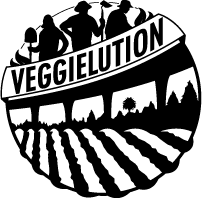The importance of a tractor
/With your help, this beauty can be ours!
It's been about 2 months since we've had our rental tractor onsite, and if you've been out here you can see that this machine is transforming the face of our farm on weekly basis.
We are in the midst of an online campaign to purchase this tractor, and as the Farm Director I wanted to explain to you all why this investment is so important and what it means in terms of labor saving.
MOWING - 10 hours of hand labor v. 2 hours of tractor time.
Pre-Tractor - About 3 years ago, when we wanted to mow a field there were two ways of doing it - with a machete or a weedwacker. Luckily we had a Tongan friend who taught me how to use a machete efficiently - when he was a kid in Tonga he sometimes had to mow an entire lawn with a machete. We mowed up to 1/4 acre a time this way, which took about 2.5 hours and about 3,000 calories.
With Tractor - We've been mowing our mustard / rye grass winter cover crop and weeds around the farm in no time at all. 1 acre takes about 2 hours, including the time it takes to attach and detach the mower, and the job is done way better.
SOIL PREPARATION - 1-2 weeks v. 1-2 days work
Pre-Tractor - Each new year we go through several steps to get a plot ready for planting. This usually involves mowing, one or two passes with a disc, followed by two passes with a chisel plow, and one more pass with the disc. A disc churns the top several layers of the soil, incorporating crop residue, cover crops or other organic matter that was on the surface into the soil. The chisel plow is what really "rips" the soil to a depth of 12 inches at least. Our soil is heavy clay so requires this deep chiseling to open up channels in the soil so air and water can penetrate deeply. In the past City staff did this process for us. The City of San Jose has had severe budget cuts in the past few years so despite their best efforts, it generally took city workers one or two weeks to get around to doing this work. Such a large window made it very difficult to get plantings done on time. In addition, the city tractor was not designed for such heavy work.
With Tracor - Now, with our rented tractor, we can prepare a 1-acre field in one or two days by ourselves
BED TURNING/ SHAPING - 15 hrs/bed v. 1.5hrs/30 beds...that's 3 minutes per bed, whoa!
Pre-Tracor - Any of you who have volunteered at the farm know how labor intensive of a process this is. Bed shaping is really where the tractor changes our lives. We have about 180 3-foot wide planting beds on the farm now, split between 7 separate plots. Turning and shaping 1 bed by hand takes approximately 15 volunteer hours. That's 5 people working 3 hours to turn the bed with forks, mound up the bed and rake it flat.
With Tractor - If we are working a 3/4-acre plot that has been newly cultivated, shaping rough beds on the entire thing with the tractor takes about 1.5 hours - that's a total of 30 beds! We still come back and top dress with compost by hand and do some raking, but the labor savings is enormous.
MOVING MULCH & COMPOST- edious volunteer labor v. 1 quick scoop and drop
Organic matter is a huge part of our farm, and we do a lot of work to manage it. Two main types of organic matter include compost (used to improve planting beds) and mulch (used to suppress weeds in paths and native plantings).
Pre -Tractor- Moving half a yard of organic matter takes volunteers about 4-5 wheelbarrows to move. This takes up to half an hour, and a lot of hard work.
With Tractor-The front loader bucket on our tractor holds about 1/2 yard of material. With a tractor these materials can be moved extremely quickly without volunteers hauling wheelbarrows around the farm in the heat for hours on end.
At the end of the day it's simple - running a 6-acre farm takes a lot of work, way more work than we could ever hope to accomplish if we tried to do it by hand, even with all of our volunteers. While we will continue to demonstrate hand gardening techniques on certain areas of the farm, the plan is to relieve volunteers of the heaviest work so they can focused on skilled tasks such as greenhouse propagation, transplanting, harvesting and other tasks. Our farm is a cooperative enterprise with the goal of providing vegetables for the community while offsetting our operating costs. This means we need to be as efficient as possible in order to grow lots of produce, and the tractor is helping us achieve that. So please consider helping us with this is important investment, and feel free to visit us at Prusch Park to see our rented tractor in action and to talk about our farm operation in more detail.
Mark Medeiros
Farm Director


